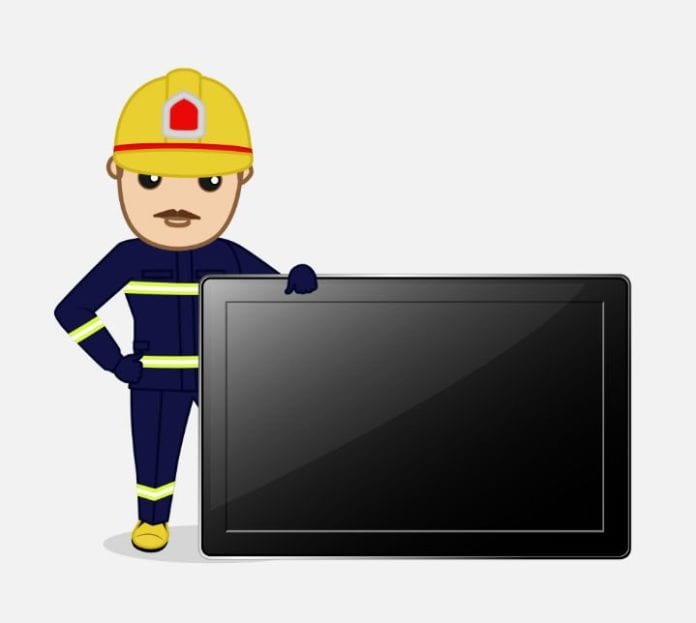Traditional smartphones and tablets may be experiencing a slowdown in sales, but the rugged tablet market is expected to see a boost in the coming years
It is no secret that the consumer tablet market has slowed down in sales. Some industry experts, like TechCrunch have gone so far as to say (gasp) “tablets are dead.” The truth is, as consumer preferences shift and smartphone manufacturers produce devices with larger screens, global shipments of consumer tablets are dropping – a whopping 12.3% in the second quarter of 2016, according to the International Data Corporation.
While original equipment manufacturers like Apple and Samsung are trying to put a shot in the arm of the consumer tablet market, those of us in the rugged tablet market are experiencing a much different scenario. In fact, VDC Research actually expects the rugged tablet market to expand from $589.7 million in 2016, to $623.6 million by 2020. Let’s examine why rugged tablets cannot only weather extreme geological and industrial conditions – but also the hotly debated tablet market.
Evolution of rugged tablets
Twenty years ago – before Wi-Fi or even Google were available – the first rugged tablets were manufactured. That’s right – rugged tablet devices were hitting the market 14 years before the Apple iPad took its first pre-order. These early rugged devices enabled industrial workers in sectors ranging from utilities, public safety, manufacturing, transportation, oil and gas, mining, and more to safely and securely compute in the field.
Over the past two decades, rugged tablets have become much thinner and lightweight; displays have become shatterproof and sun viewable; and the frames are vibration and shock resistant, making in-field operations more functional and efficient. Unlike consumer handheld devices, today’s rugged tablets can withstand just about any attempted infliction due to their water-, dust- and extreme temperature-resistant design. For historical perspective, the first pen tablet Xplore designed in 1996 and manufactured in 1997 weighed five pounds and could survive a four-foot drop onto concrete. The average rugged tablet today weighs about two pounds and is built to operate in a range of climates – from air to sea to mines.
While external features have evolved, so has the internal power of rugged devices. Today’s tablets provide users with stronger, quicker operating systems and more thorough connectivity than ever before with Bluetooth, Wi-Fi and LTE data-enabled devices. With those connections, heightened government-level multi-authentication security measures must follow, therefore, many rugged tablets come equipped with fingerprint readers, data and device secure theft protection, and licensed encryption.
To meet the transitioning demands of the modern mobile workforce, rugged tablets are now manufactured with compatible peripherals. Features such as detachable keyboards enable a device to function both as a tablet and a laptop – allowing workers to transition from the field to the vehicle and back to the office with ease. The addition of optional features such as built-in barcode scanners and radio-frequency identification readers enable easy data acquisition in support of heavy machinery maintenance and during picking, packing and transit of goods within manufacturing and distribution environments. No longer just “a niche market mobility solution,” these modern “detachable” rugged tablets have evolved to function as a user’s primary computing device – a promise consumer tablets have failed to live up to.
Soaring sales
While rugged devices themselves continue to improve, so do sales. Technavio’s analysts forecast the global rugged tablet market to grow at a 14.9% compound annual growth rate between 2014 and 2019.
Why are the sales improving? Nonruggedized devices still fail to meet all of the criteria that are typical in the utilities, telecom, auto manufacturing and military sectors – just like they did 20 years ago. And when factoring in the hard and soft costs of deploying, securing, and managing a device – and all of its accessories – through the entire life cycle, the total cost of ownership for a nonrugged device is more than double that of a rugged tablet. Beyond that, rugged tablets have always been ideal for the mission-critical professionals who divide their time between the office and rugged field environments and require a small factor with a large enough screen to read easily.
For example, take the public safety industry where emergency medical technicians, firefighters and police officers have multiple workflows that can be streamlined and facilitated solely by rugged tablets. Whether an EMT is entering patient triage data and photos from the ambulance, or a fire marshal is conducting a fire safety inspection or a police officer is entering a driver’s information at a traffic stop, today’s rugged tablets allow for a quick, consistent solution for efficient data entry for public safety professionals in high-stakes or routine field situations.
The future of rugged tablets
While analysts predict a strong upcoming five years of growth for the rugged tablet market, there also are signs that rugged devices will easily continue to be the first choice for field service industries for another 20 years. For starters, enterprises are building and deploying a more mobile workforce across the board. IDC said that by 2020, the U.S.’ mobile workforce will surpass 105 million and spending to meet that mobile workforce will top $1.8 trillion. These workers will require powerful handheld PCs. In fact, Gartner said global desktop shipments will decrease 5% over the next four years as enterprises opt for mobile computing.
We’re already seeing new use cases for rugged tablets emerging as field workers are tasked with collecting and computing more data sets in real time. For example, sleek consumer-grade devices may suffice in the front of the store and help keep a pulse on operations, but in the warehouse environment, where consistent systems performance is the key to operational vitality, rugged reliability trumps aesthetics. For instance, if a roving warehouse manager drops the consumer-grade tablet while counting holiday inventory during the busiest time of year – the asset is destroyed and productivity is lost. Therefore, as online shopping continues to rise, retail chains are increasingly choosing rugged tablets to facilitate this new commerce trend.
In addition, while rugged tablets have always played a key role in frontline ops, there is a growing demand in the defense segment for rugged tablets with the rising popularity of drone usage for intelligence, surveillance, reconnaissance and beyond. In fact, by end user, the defense sector accounted for a leading share in the overall rugged electronics market in 2015, and is set to register the highest compound annual growth rate in the rugged tablet industry from 2015 to 2024 according to a recent TMR forecast.
When rugged tablets were first hitting the mass market in 1997, these applications were futuristic at best. The beauty of rugged tablets is their inherent ability to meet rigorous workforce demands that man has yet to dream up. From basic manufacturing operations to enabling soldiers in wars not yet fought to next-gen space exploration – rugged tablets will continue to be the primary, preferred choice for computing.

Mark Holleran serves as president and COO of Xplore. Since 2006, Holleran has managed the day-to-day operations of Xplore, including marketing, operations, engineering and finance. Holleran brings more than 30 years of leadership and computing experience to Xplore, which is currently celebrating its 20th anniversary as The Rugged Tablet Authority®.
Editor’s Note: The RCR Wireless News Reality Check section is where C-level executives and advisory firms from across the mobile industry share unique insights and experiences.
Photo copyright: vectorshots / 123RF Stock Photo

